Emily Sherwood to Receive the Scarsdale Bowl
- Details
- Hits: 7777
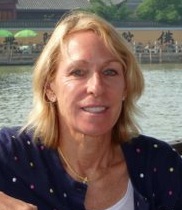 Emily Sherwood, a former President and Trustee of the Scarsdale Board of Education, will be the 74th recipient of the Scarsdale Bowl Award and the 21st woman chosen. She was selected by the Scarsdale Bowl Committee because, “She exemplifies the best of Scarsdale volunteerism, exhibiting a wonderful balance of self confidence and humility, doing all she does for the right reasons and not for the glory.” The award is presented annually by the Scarsdale Foundation to “one who has given unselfishly of their time, energy and effort to the civic welfare of the community.”
Emily Sherwood, a former President and Trustee of the Scarsdale Board of Education, will be the 74th recipient of the Scarsdale Bowl Award and the 21st woman chosen. She was selected by the Scarsdale Bowl Committee because, “She exemplifies the best of Scarsdale volunteerism, exhibiting a wonderful balance of self confidence and humility, doing all she does for the right reasons and not for the glory.” The award is presented annually by the Scarsdale Foundation to “one who has given unselfishly of their time, energy and effort to the civic welfare of the community.”
Sherwood will be honored at the annual Scarsdale Bowl Dinner on Wednesday evening, April 6, at the Lake Isle Country Club in Eastchester. All Scarsdale residents are invited to attend this celebration of community volunteerism. For more information, go to www.scarsdalefoundation.org .
“The Scarsdale Bowl was initiated in 1943 to acknowledge an individual’s extraordinary contributions to the civic life of this community” said Rita Golden, Chair of the Scarsdale Bowl Committee. “The members of the 2011 Bowl Committee unanimously agreed that Sherwood exhibits the spirit and accomplishments to earn this honor. She is highly intelligent, immensely hard-working, thoughtful and creative, a genuinely inclusive and collegial leader who has risen to the top of every organization she touches”.
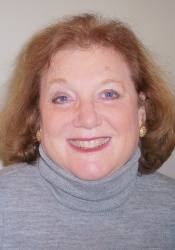
Sherwood and her husband, Ned, moved to Scarsdale in 1984, with two toddlers. As the boys entered Heathcote School, she remembers being an excited new parent attending PTA meetings. Before long, she was involved in PTA cultural arts and publicity, and never let up, working on most other PTA committees over the next few years. When her youngest child was four, she accepted the Heathcote PTA Presidency, which led to decades of Scarsdale school involvement. As PT Council President, she helped found the Young Writer’s Conference for elementary students. She then chaired the Conference while serving also as Co-Chair of the Scarsdale Task Force on Drugs and Alcohol, thereby staying involved with issues for children of all ages. She served on the School Board Nominating Committee and later headed it as Chair. From there, Sherwood went on to serve on the Board of Education as a trustee, Vice President and President. Beyond her Scarsdale school related involvement, she has also sat on the boards of Scarsdale/Edgemont Family Counseling, Scarsdale Teen Center, Friends of the Scarsdale Library, Scarsdale Community Center, and the Citizen’s Nominating Committee. Outside of Scarsdale, Sherwood has been a board member of the United Way, the Westchester-Putnam School Boards Association, Stanford University Parent’s Advisory Board, and the Dana Farber Cancer Institute Visiting Committee, as well as the University of Pennsylvania, as Class of1973 Gift Chair. And being an avid athlete herself, she volunteered in sports-related activities by coaching tennis for Heathcote’s Rec team, serving as the soccer area chair, and President of the Heathcote Athletic Association.
She was a member of the Scarsdale Bowl Committee’s class of 2000, and is now a trustee of the Scarsdale Foundation and its
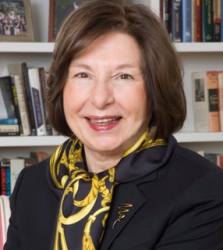
Her volunteer efforts continue. When her term on the Scarsdale School Board ended, Sherwood sought out other meaningful uses for her abundant energy and talents. She began working at Partnership for Children’s Rights in 2007 as Director of Development /Public Relations and Board member. This nonprofit organization, founded by Scarsdale resident, Warren Sinsheimer, advocates for children with special needs by helping them obtain appropriate educational services.
Sherwood graduated from the University of Pennsylvania, Magna Cum Laude/Phi Beta Kappa and holds a PhD from Brandeis University in Social Planning and Policy. She was honored in 2005 by the Westchester Fund for Women and Girls/Westchester Community Fund as one of six outstanding leaders. She is a contributing editor to Education Update, a NYC-based education newspaper, and Ethikos, a business ethics newsletter. Sherwood and her husband are the parents of 4 adult children, Matt, Rich, Mark and Pam, all of whom attended Scarsdale schools.
There is an opportunity to see Emily actively volunteering as she participates in the first Friends of the Scarsdale Library Spelling Bee Jan 28th. This event will raise funds to install state of the art technology in the Scott Room. Her team is aptly named Bee Cause.
Snow Day
- Details
- Hits: 4064
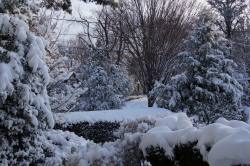 Another beautiful day for shoveling, sledding and building snowmen as the third snowstorm of the season conveniently ended overnight. Though it’s difficult to get an exact measurement of the accumulation due to snow that was previously on the ground, it looks like Scarsdale received about 8 inches of the white stuff.
Another beautiful day for shoveling, sledding and building snowmen as the third snowstorm of the season conveniently ended overnight. Though it’s difficult to get an exact measurement of the accumulation due to snow that was previously on the ground, it looks like Scarsdale received about 8 inches of the white stuff.
Schools are closed all day in Scarsdale and Edgemont and several events were rescheduled due to the weather. In Edgemont, the Board of Education meeting originally scheduled for Tuesday night January 11 was postponed until Tuesday January 18 at 8:15 pm at Edgemont High School LG1. In Scarsdale, the first Community Budget Forum scheduled for 7:30 p.m. Wednesday night, January 12th, has been rescheduled to Thursday, January 20th, 7:30 p.m. in room 170-172 at SHS.
For those going to work in the city today, Metro North is on a Sunday schedule, running just one train an hour from Hartsdale and Scarsdale to Grand Central. Trains are leaving Scarsdale at 17 minutes after every hour. Check out the schedule here:
Scarsdale used it’s new “Blackboard Connect” system to call residents to advise them that the paper and cardboard recycling pick-up scheduled for Wednesday January 12 was cancelled due to the storm and will be picked up on Thursday January 13. Co-mingled recyclables scheduled for pick up on January 12 will be picked up on Friday 1/14.
In Greenburgh Paul Feiner reports that Town Hall and town government buildings are open on Wednesday and that crews worked through the night to clear the snow from the streets.
According to Scarsdale Village Manager Al Gatta at 11 am on Wednesday, “there are still some snow packed roads, but we have a full crew working today for curb to curb touch up on main roads, cleaning intersections, applying sand and salt, clearing commuter walkways and moving snow masses. The best aid is Mother Nature… as a sunny day and temperatures above 32 degrees will aid the melting.”
Send your snow photos and updates to [email protected] to share them with your neighbors.
Trustees Consider Affordable Housing and Revaluation
- Details
- Hits: 5043
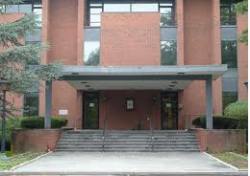 Scarsdale Village Trustees were back at work right after the New Year to consider fair and affordable housing in Scarsdale and a village-wide revaluation.
Scarsdale Village Trustees were back at work right after the New Year to consider fair and affordable housing in Scarsdale and a village-wide revaluation.
On Wednesday January 5, the Trustees Law and Land Use Committees met to discuss how Scarsdale might comply with the County’s affordable housing settlement that requires Westchester County to provide 750 units of affordable housing by 2016. Though the Federal Monitor has not approved Westchester’s entire plan, the clock is running, and if the County fails to meet deadlines they could pay large penalties. The cost of this penalty could be passed along to municipalities in the County.
Therefore, the Mayor believes it would behoove Scarsdale to take steps to comply to demonstrate the Village’s willingness to do our share. The Federal Monitor James Johnson did approve a Model Code Provision that meets the requirements of the stipulation. The Model Code is provided as a template for municipalities to adopt, and the monitor is hopeful that Villages in Westchester will incorporate the provisions into their own code.
Village Planner Elizabeth Marrinan reviewed the Model Code to determine if portions of it could be adopted by Scarsdale.
Here are the provisions under consideration:
- A requirement that at least 10% of the total number of units in residential developments of 10+ units be Affordable Affirmative Furthering Fair Housing Units (AFFH)
- Income limits for owner occupied sale units of 80% of area median income (AMI) and income limits for rental units of 30-60% of AMI for AFFH units
- That developers market the AFFH units in accordance with an approved Affordable Housing Affirmative Marketing Plan
- That the affordable units remain affordable by deed restriction or covenant for 50 years.
Following a discussion, the Trustees asked the Village staff to do the following:
- Suggest revisions to the Model Ordinance to fit the facts and circumstances of Scarsdale
Obtain information from other villages about they are doing and not doing vis-vis the model ordinance.
The Village staff agreed to have this information to the Trustees within 45 days.
Revaluation: Following the discussion of Affordable Housing, the Trustees Law Committee considered revaluation. On the table was a resolution to ask the Village staff to draft an RFP to retain an expert to conduct the revaluation in Scarsdale.
After some discussion, the Trustees determined that this did not require a resolution and that the document drafted by the Village staff provided more detail than needed about the revaluation.
They decided to simplify the request and agreed that the Village staff should draft an RFP that will allow the Village to determine what experts are available and what the cost might be.
The complication is that Westchester County is considering a Countywide revaluation and is already in the process of taking aerial photographs that could be used by Scarsdale as one piece of the revaluation. However, the County has adopted a four-year timeline for their revaluation, and if Scarsdale waits for the County to complete their data collection and photography it could be up to six years before Scarsdale would complete their revaluation. Though the County would defray some of the cost of the revaluation, six years may be too long to wait. The number of tax grievances in Scarsdale continues to climb and a recent report by the Scarsdale Forum calls for an immediate revaluation.
Therefore, the Trustees asked the Village Manager to draft an RFP to determine the cost of conducting a revaluation for Scarsdale alone, in conjunction with one more additional municipalities or as part of a countywide revaluation. In addition, the RFP should request pricing for the ”Chevrolet” approach where fewer factors are considered and fewer home entries required, versus a more in-depth revaluation with a longer list of home characteristics to be considered and a higher percentage of home entries.
Robert Berg attended the meeting on behalf of the Scarsdale Forum and asked the Trustees to do more than draft the RFP, as the Forum is eager to move forward with the entire revaluation. As no other objections were heard, the Trustees agreed to request the RFP and the meeting was adjourned.
Candidates Wanted for Village Trustee and Mayor
- Details
- Hits: 3608
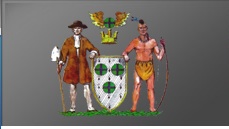 The Citizen's Nominating Committee (CNC) is looking for potential candidates for Mayor and Village Trustee. Our non-partisan system tries to get the best Scarsdale citizens to serve on our Village Board. The committee considers all who are interested in the positions available. For further information, please contact a member of the CNC ( http://www.scarsdaleprocedurecommittee.org/ncmembers.htm ) or CNC Chair Bruce Wells at 472-2696 or [email protected] .
The Citizen's Nominating Committee (CNC) is looking for potential candidates for Mayor and Village Trustee. Our non-partisan system tries to get the best Scarsdale citizens to serve on our Village Board. The committee considers all who are interested in the positions available. For further information, please contact a member of the CNC ( http://www.scarsdaleprocedurecommittee.org/ncmembers.htm ) or CNC Chair Bruce Wells at 472-2696 or [email protected] .
The deadline for submission of materials is January 18th at 5 p.m. The CNC plans to announce the slate on January 26th.
Ridgeway Golf Club Sold to the French American School
- Details
- Hits: 9593
 It’s finally settled -- Ridgeway Golf Club will now be home to the French American School – ending the property’s long history as a golf club. The French American school reached a deal to purchase the club for $11 million earlier this month, and plans to consolidate their 852 students onto one campus. Currently they run a preschool in Scarsdale, a lower school in Larchmont and an upper school in Mamaroneck.
It’s finally settled -- Ridgeway Golf Club will now be home to the French American School – ending the property’s long history as a golf club. The French American school reached a deal to purchase the club for $11 million earlier this month, and plans to consolidate their 852 students onto one campus. Currently they run a preschool in Scarsdale, a lower school in Larchmont and an upper school in Mamaroneck.
It is difficult to imagine the grand clubhouse with its gracious dining room and marble locker rooms as a school. Beyond the indoor facility there’s an Olympic-sized outdoor pool, ten tennis courts and the 18-hole golf course. The club was the site of many happy occasions – including bar and bat mitzvahs, weddings, delicious Sunday brunches and charity fundraisers. The dining room windows looked out over the bucolic golf course and dining there you could easily forget you were minutes from downtown White Plains.
The city of White Plains had considered purchasing the 128-acre property and creating a semi-private recreational facility but the school stepped in with their offer before White Plains could reach a decision. According to a statement from the school, they will no longer maintain a golf course on the property, but much of the land will remain as open space.
The club began in 1912 as the Gedney Farm Hotel that included tennis facilities, a swimming pool, bowling, squash courts, stables, a polo field, ice skating  rink, and a kennel for pets of guests. A picture of the original pool from a penny postcard is included here. Howard Willets, who owned racehorses, stabled them in a barn that is now the men's locker room. Also shown here is a lease for the property for the creation of the Gedney Farm Golf Club in 1922. On September 20, 1924 a fire destroyed the original hotel and Eddie Cantor, a guest at the time, witnessed the 9-hour blaze.
rink, and a kennel for pets of guests. A picture of the original pool from a penny postcard is included here. Howard Willets, who owned racehorses, stabled them in a barn that is now the men's locker room. Also shown here is a lease for the property for the creation of the Gedney Farm Golf Club in 1922. On September 20, 1924 a fire destroyed the original hotel and Eddie Cantor, a guest at the time, witnessed the 9-hour blaze.
The golf course remained as part of the Gedney Farm Golf Course until 1952 when it was purchased by a group of individuals from Harry Lewis and renamed the Ridgeway Country Club.
 Though it thrived for decades, the club fell on hard times in 2009, losing 25% if it’s membership. Facing a deficit of $1 million on a $4 million budget, they originally sought to sell the club for $20 million and to keep it open for another five years. They also reduced the initiation fees hoping to attract enough new members to stay afloat. However existing members left for other clubs, and though some new members signed on, there were not enough members to meet expenses.
Though it thrived for decades, the club fell on hard times in 2009, losing 25% if it’s membership. Facing a deficit of $1 million on a $4 million budget, they originally sought to sell the club for $20 million and to keep it open for another five years. They also reduced the initiation fees hoping to attract enough new members to stay afloat. However existing members left for other clubs, and though some new members signed on, there were not enough members to meet expenses.
In December 2010, the club was sold for half of the original asking price. Sadly, this beautiful expanse in the heart of White Plains will now be used for education, rather than recreation. Share your memories of Ridgeway below:










